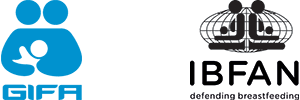
Les facteurs de la première enfance et l’infection par COVID-19 en Angleterre : Une analyse prospective des participants à la Biobank du Royaume-Uni. A Didikoglu et al. April 2021. https://doi.org/10.1016/j.earlhumdev.2021.105326
Résultats clés
• Un faible poids à la naissance a été associé à une hospitalisation due à la COVID-19.
• La probabilité de contracter la COVID-19 était inférieure de 12 % chez les répondants qui ont été allaités lorsqu’ils étaient bébés.
• Les personnes ayant déclaré que leur mère fumait à la naissance avaient 20 % plus de chances d’être infectées par le COVID-19 et 24 % plus de chances d’être hospitalisées.
Résumé
Si le tabagisme et la présence de maladies chroniques sont des facteurs de prédisposition à l’infection par COVID-19, le risque de contracter la maladie est très variable, ce qui peut s’expliquer par des facteurs déterminés au début de la vie.
En utilisant une large cohorte de la population britannique (UK Biobank), cette étude visait à identifier les associations entre les facteurs liés au début de la vie, y compris le tabagisme maternel, l’allaitement, le mois de naissance et le poids de naissance, et le risque d’infection par COVID-19 et d’hospitalisation.
Les résultats du test COVID-19 des participants anglais (non originaires d’Écosse, du Pays de Galles et d’Irlande du Nord) ont été recueillis entre le 16 mars 2020 et le 21 décembre 2020, et ont été fournis par Public Health England (PHE)
La population étudiée était de 384 816 participants. L’étude a classé les personnes interrogées dans la catégorie « allaitées » si elles confirmaient avoir été nourries au sein lorsqu’elles étaient bébés.
Les auteurs de cette étude ont effectué un modèle de régression logistique multivariable pour estimer les rapports de cotes de l’infection par COVID-19 (7733 positifs contre 377 083 participants restants) et de l’hospitalisation due à COVID-19 (2494 patients hospitalisés contre 382 322 participants restants). Les principaux prédicteurs étaient le tabagisme maternel à la naissance, l’allaitement maternel, le mois de naissance et le poids à la naissance.
Le nombre de participants ayant déclaré avoir allaité était proportionnellement plus faible chez ceux qui ont été testés positifs pour une infection par COVID-19 et qui ont été hospitalisés que chez ceux qui n’ont pas été testés.
Les répondants qui ont été allaités avaient globalement 12 % de moins de risque de contracter la COVID-19 (95 % IC 0,83 à 0,93). Cet effet protecteur de l’allaitement maternel était présent dans les deux pics. L’allaitement n’a été associé négativement à l’hospitalisation que lors du premier pic (RC ajusté 0,83, 95 % IC 0,71 à 0,97).
L’allaitement maternel a une relation significative avec un risque plus faible d’infection par COVID-19. Ce résultat conforte une étude américaine qui a montré que l’allaitement maternel pendant au moins 6 mois offre une meilleure protection contre les infections des voies respiratoires par rapport à des durées d’allaitement plus courtes. Il a également été démontré que l’allaitement a des effets protecteurs contre les infections des voies respiratoires inférieures pendant la première année de vie, et cette étude de Didikoglu et al. suggère que cet effet pourrait se prolonger à l’âge adulte.
English Text
Early life factors and COVID-19 infection in England: A prospective analysis of UK Biobank participants. A Didikoglu et al. April 2021. https://doi.org/10.1016/j.earlhumdev.2021.105326
Highlights
• Low birth weight was associated with hospitalisation due to COVID-19.
• The odds of contracting COVID-19 were 12% lower among respondents who were breastfed when they were babies.
• People who reported that their mother smoked when they were born had 20% higher odds of COVID-19 infection and 24% higher odds of hospitalisation.
Abstract
While smoking [2] and the presence of chronic diseases are susceptibility factors for COVID-19 infection, there is a wide variation in the risk of contracting the disease that might be explained by factors determined during early life.
Using a large UK population cohort (UK Biobank) this study aimed to identify associations between early life factors, including maternal smoking, breastfeeding, birth month and birthweight, and the risk of COVID-19 infection and hospitalisation.
COVID-19 test results from English participants (not from Scotland, Wales and Northern Ireland) were collected between 16th March 2020 and 21st December 2020, and were provided by Public Health England (PHE). The study population was of 384,816 participants. The study categorised respondents as breastfed if they confirmed that they were breastfed when they were babies.
The authors of this study performed a multivariable logistic regression models to estimate the odds ratios of COVID-19 infection (7733 positive compared to 377,083 remaining participants) and inpatient due to COVID-19 (2494 inpatient compared to 382,322 remaining participants). The main predictors were maternal smoking around birth, breastfed as a baby, birth month and birthweight.
The number of participants reported that they had breastfed were proportionally lower in those who tested positive for COVID-19 infection and who were hospitalised compared to those not tested.
Respondents who were breastfed had overall 12% lower odds of contracting COVID-19 (95%CI 0.83 to 0.93). This protective effect of having breastfed was present in both peaks. Breastfeeding was negatively associated with hospitalisation only in the first peak (adjusted OR 0.83, 95%CI 0.71 to 0.97).
Breastfeeding had a significant relationship with lower risk of COVID-19 infection. This result supports a US study which showed that breastfeeding for at least 6 months provides greater protection against respiratory tract infections compared with shorter breastfeeding periods. Breastfeeding has also been shown to have protective effects against lower respiratory tract infection in the first year of life, and this study suggests that this effect may last into adulthood.
